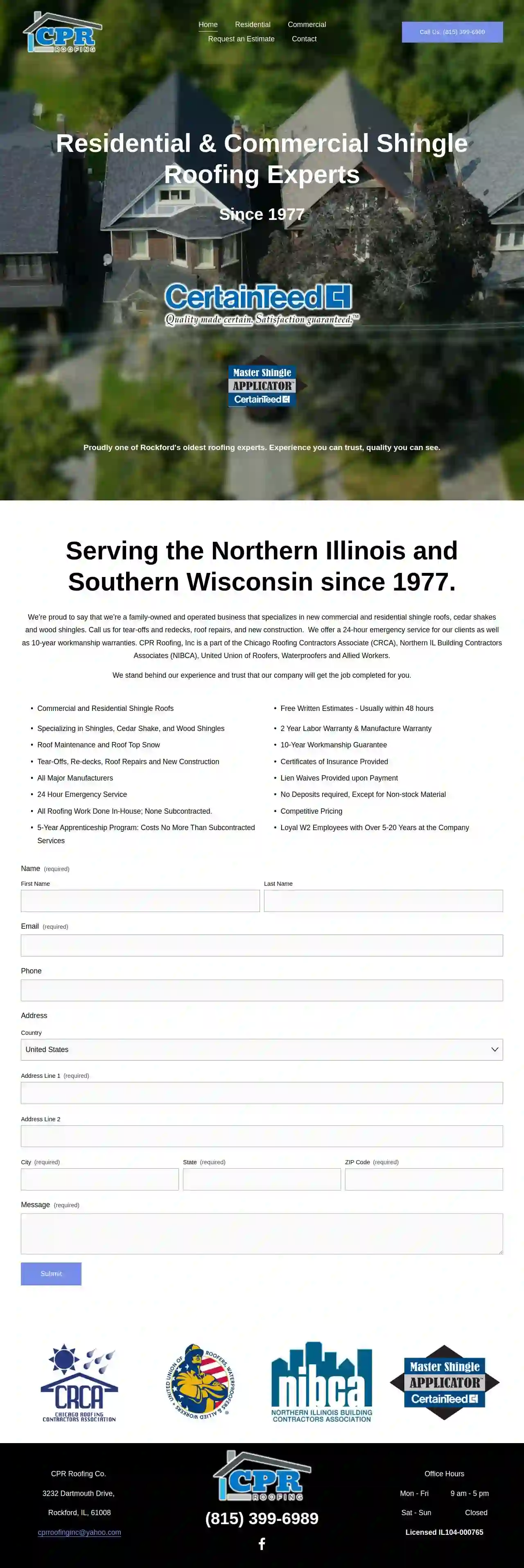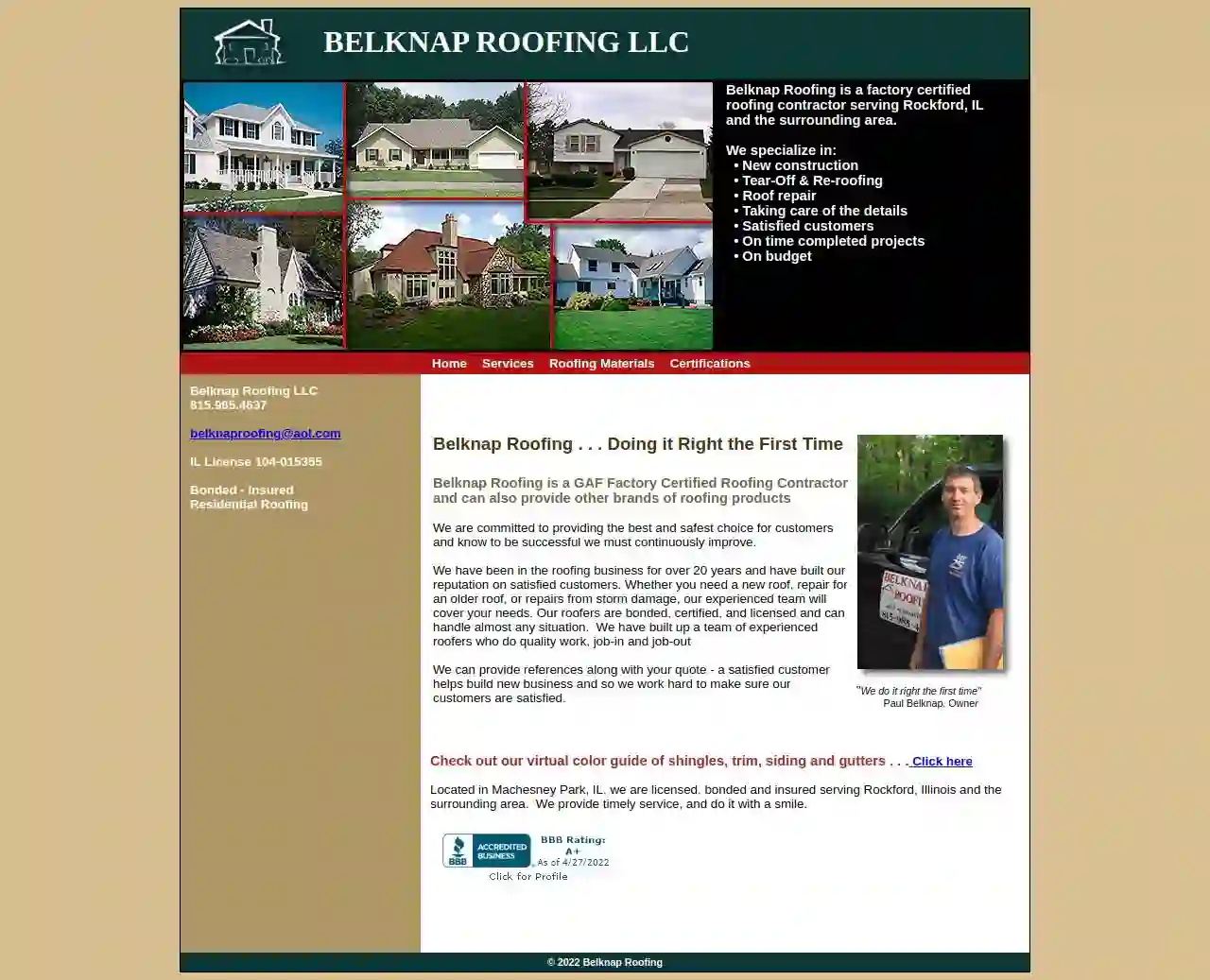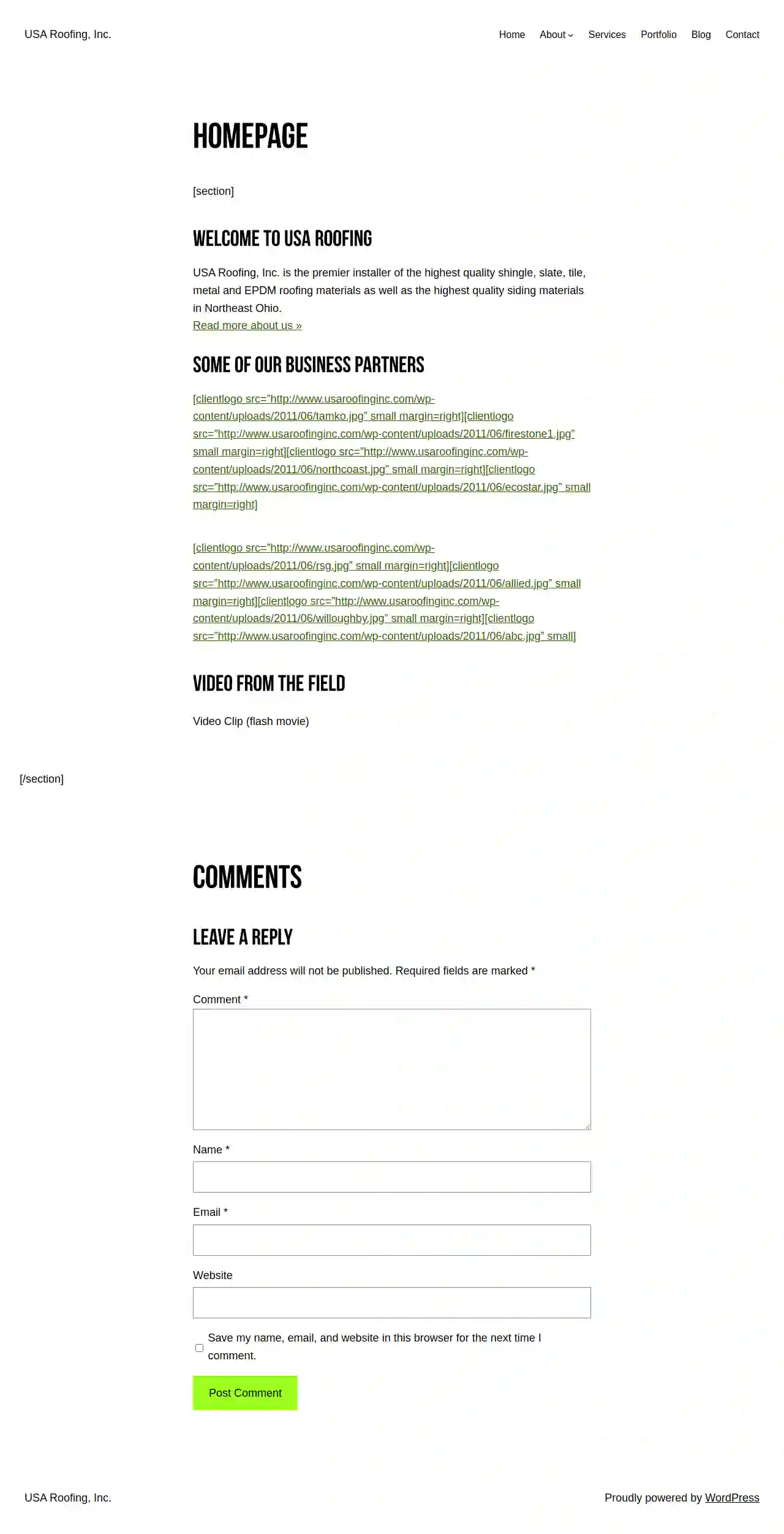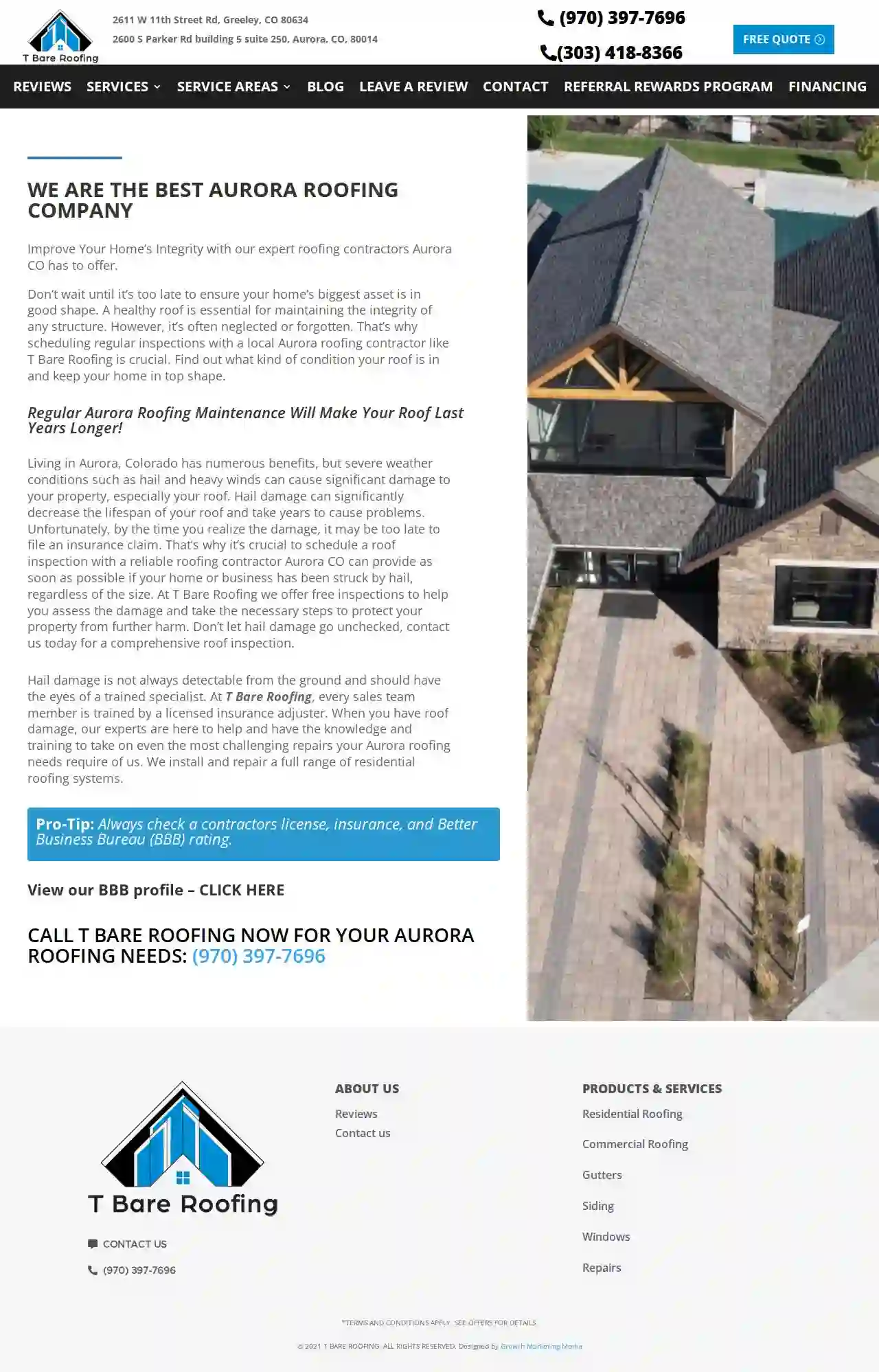Roofing Companies Melrose Park
Find top Roofing Services in Melrose Park
Get up to 3 Roofing Companies quotes for your project today! Compare profiles, reviews, accreditations, portfolio, etc... and choose the best offer.

Central Point Restorations, Inc.
512 reviewsCherry Valley, Illinois, 125 State Street, 61016, USCentral Point Restorations is a locally rooted company that has been providing high-quality commercial and residential roofing services since 2017. Our team aims to keep customers satisfied by providing honest work for an honest price. We work around the clock to stay in communication with our customers throughout the entirety of the job. We proudly serve Winnebago County and are dedicated to providing customer service that is second to none.
- Services
- Why Us?
- Our Team
- Gallery
Get Quote
CPR Roofing Inc.
53 reviews3232 Dartmouth Drive, Rockford, 61008, USSince 1977, CPR Roofing Co. has been a trusted name in the roofing industry, serving Northern Illinois and Southern Wisconsin. As a family-owned and operated business, we specialize in new commercial and residential shingle roofs, cedar shakes, and wood shingles. Our team of experienced professionals is dedicated to providing high-quality workmanship and exceptional customer service. We offer a comprehensive range of roofing services, including tear-offs and redecks, roof repairs, and new construction. Whether you need a simple repair or a complete roof replacement, we have the expertise and resources to get the job done right. We stand behind our work with a 10-year workmanship guarantee and offer 24-hour emergency service for our clients. CPR Roofing, Inc. is a proud member of the Chicago Roofing Contractors Associate (CRCA), Northern IL Building Contractors Associates (NIBCA), and the United Union of Roofers, Waterproofers and Allied Workers. We are committed to upholding the highest industry standards and providing our clients with peace of mind. Contact us today for a free written estimate. We look forward to serving you!
- Services
- Why Us?
- Accreditations
- Gallery
Get Quote
Belknap Roofing, L.L.C.
54 reviews10100 N. Second Street, Machesney Park, 61115, USBelknap Roofing is a factory certified roofing contractor serving Rockford, IL and the surrounding area. We specialize in: • New construction • Tear-Off & Re-roofing • Roof repair • Taking care of the details • Satisfied customers • On time completed projects • On budget Belknap Roofing is a GAF Factory Certified Roofing Contractor and can also provide other brands of roofing products. We are committed to providing the best and safest choice for customers and know to be successful we must continuously improve. We have been in the roofing business for over 20 years and have built our reputation on satisfied customers. Whether you need a new roof, repair for an older roof, or repairs from storm damage, our experienced team will cover your needs. Our roofers are bonded, certified, and licensed and can handle almost any situation. We have built up a team of experienced roofers who do quality work, job-in and job-out. We can provide references along with your quote - a satisfied customer helps build new business and so we work hard to make sure our customers are satisfied. "We do it right the first time" Paul Belknap, Owner Check out our virtual color guide of shingles, trim, siding and gutters . . . Click here Located in Machesney Park, IL, we are licensed, bonded and insured serving Rockford, Illinois and the surrounding area. We provide timely service, and do it with a smile.
- Services
- Why Us?
- Accreditations
- Our Team
- Gallery
Get Quote
USA Exteriors
526 reviewsAurora, USAt USA Exteriors, we are dedicated to serving you. Dedicated to Serving You USA Exteriors is your premier and trusted contractor when it comes to roofing, siding and gutters. Our contractual services are offered to both residential and commercial customers. We are dedicated to serving you. Satisfaction guaranteed!
- Services
- Why Us?
- Testimonials
- Gallery
Get Quote
Central Roofing of Champaign
4.953 reviewsChampaign, USCentral Roofing is a veteran-owned and operated residential and commercial roofing contractor serving Illinois since 2012. We are a top Illinois roofing contractor and in the top 100 in the country! Central Roofing is dedicated to providing roofing services that exceed customer expectations. With 3 convenient office locations, we can quickly respond to residential and commercial roofing jobs throughout Central Illinois and beyond. We offer a wide range of roofing systems, including shingle, metal, PVC, TPO, EPDM, and specialty systems. Central Roofing is committed to delivering exceptional service and quality craftsmanship on every project.
- Services
- Why Us?
- Testimonials
- Gallery
Get Quote
Cool Roofs
47 reviewsChicago, USWelcome to Cool Roofs, The Place for Quality Metal Roofs. If your concept of a metal roof is the old tin barn roofs of years past, then let us show you the updated metal roofs of today. Metal roofing has come a long way over the years to become stylish, low maintenance, durable and much more. Take a look at a variety of metal roofs we have installed and see for yourself the way a metal roof can enhance the beauty of the home upon which it is installed. Your home is your most valuable asset and it is an investment worth protecting. A metal roof is an effective way to not only protect the value of your home, but it can increase the overall value as well. The high performance, energy efficiency, and affordable metal roofing gives you the durability to make it the last roof that you should ever need to install on your home. With Cool Roofs, it's 'One and Done'.
- Services
- Why Us?
- Accreditations
- Gallery
Get Quote
USA Roofing Inc
44 reviews123 Make Believe Drive, Some City, 54990, USUSA Roofing, Inc. is the premier installer of the highest quality shingle, slate, tile, metal and EPDM roofing materials as well as the highest quality siding materials in Northeast Ohio. From Erie County to Ashtabula County, from Cleveland to Canton, from Medina to Ravenna, and all points in between, USA Roofing, Inc. has been installing the best, highest and steepest roofs for over 25 years. Contact USA Roofing, Inc. for competitive quotes on your next project. No job is too big or too small. Enjoy the quality, confidence and service our highly trained union installers will bring to your project.
- Services
- Why Us?
- Gallery
Get Quote
T Bare Roofing Aurora
55 reviews2611 W 11th Street Rd, Greeley, 80634, UST Bare Roofing is a local roofing company serving Aurora, CO, and the Front Range. We specialize in residential and commercial roofing, gutters, siding, windows, and repairs. Our team is committed to providing top-notch services, ensuring customer satisfaction, and standing behind our work. With decades of experience, we have the expertise to handle any roofing project, from single-family homes to commercial buildings. We offer free no-obligation inspections, stress-free solutions, and industry-leading warranties. Contact us today to schedule a consultation and get a free estimate on your home repairs.
- Services
- Why Us?
- Accreditations
- Gallery
Get Quote
American Roofing Supply
4.813 reviewsRockford, USSince 1983, American Roofing Supply has taken pride in serving contractors and communities across 10 states with the finest in both residential and commercial roofing materials. American Roofing Supply offers roofing materials and accessories from a wide array of manufacturers ranging from asphalt composition shingles, commercial roofing products, metal roofing products to wood shakes and tile/slate. With 35 convenient locations spread across the United States, we are able to meet your every roofing need. Here at American Roofing, we believe our exceptional service is what sets us apart and makes us stand out. Our friendly and knowledgeable sales staff is here to help with your every roofing need.
- Services
- Why Us?
- Testimonials
- Gallery
Get Quote
Chicago Roofing - Roof Repair & Replacement
3561 W 155th St, Markham, 60428, USChicago Roofing has been providing professional roofing contractor services to Chicago IL for many years. We are one of the most established and trusted names for roofing services in the valley, and are accredited by the Better Business Bureau. We offer some of the best roofing warranties in Chicago, because we stand behind the quality of our work. In the unlikely event that you need to utilize your roof’s warranty, you can rest easy knowing we’ve been in business for over 25 years, so we will still be around to make sure your home or business is protected. If you need roofing installation, roof leak repair, roofing maintenance, commercial roofing, industrial roofing, residential roofing, or any other roofing service – we are experienced and ready to help. Contact us today for a free estimate on your Chicago IL roofing project.
- Services
- Why Us?
- Accreditations
- Gallery
Get Quote
Over 17,196+ Roofers on our platform
Our roofing pros operate in Melrose Park and surroundings!
Roofyng.com has curated and vetted Top Roofing Companies near Melrose Park. Find a top & trustworthy pro today.
Frequently Asked Questions About Roofing Companies
- Style: Consider your home's architectural style and choose a roofing material that complements it.
- Climate: Factor in your local climate conditions. Some materials perform better in extreme heat, cold, or high winds than others.
- Budget: Roofing materials have a wide range of costs. Determine your budget and choose materials that fit your financial constraints.
- Durability and Lifespan: Assess the expected lifespan and durability of different materials.
- Energy Efficiency: Choose materials with good insulation and reflectivity properties to improve your home's energy efficiency.
- Metal roofs: Reflect sunlight, reducing cooling costs.
- Tile roofs: Offer thermal mass, regulating temperature.
- Cool roofs: White or light-colored roofs with high solar reflectance.
- Green roofs: Vegetated roofs providing insulation and reducing heat absorption.
- Asphalt Shingles: 20-30 years
- Metal Roofing: 40-70 years
- Tile Roofing: 50-100 years or more (clay and slate)
- Flat Roofing: 15-30 years (depending on material)
- Slate: 100 years or more
- Wood Shakes or Shingles: 30-50 years (with proper maintenance)
How do I choose the right roofing materials for my home?
What are some energy-efficient roofing options?
How long does a roof typically last?
What is a roof valley, and why is it important?
How do I choose the right roofing materials for my home?
- Style: Consider your home's architectural style and choose a roofing material that complements it.
- Climate: Factor in your local climate conditions. Some materials perform better in extreme heat, cold, or high winds than others.
- Budget: Roofing materials have a wide range of costs. Determine your budget and choose materials that fit your financial constraints.
- Durability and Lifespan: Assess the expected lifespan and durability of different materials.
- Energy Efficiency: Choose materials with good insulation and reflectivity properties to improve your home's energy efficiency.
What are some energy-efficient roofing options?
- Metal roofs: Reflect sunlight, reducing cooling costs.
- Tile roofs: Offer thermal mass, regulating temperature.
- Cool roofs: White or light-colored roofs with high solar reflectance.
- Green roofs: Vegetated roofs providing insulation and reducing heat absorption.
How long does a roof typically last?
- Asphalt Shingles: 20-30 years
- Metal Roofing: 40-70 years
- Tile Roofing: 50-100 years or more (clay and slate)
- Flat Roofing: 15-30 years (depending on material)
- Slate: 100 years or more
- Wood Shakes or Shingles: 30-50 years (with proper maintenance)